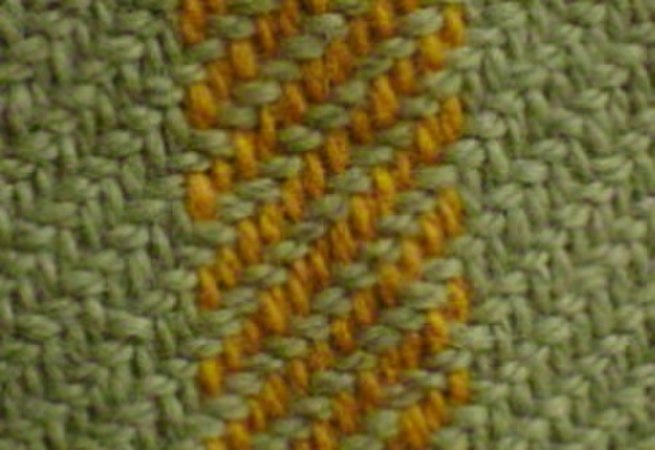Main Difference
The main difference between Twill and Tweed is that the Twill is a textile weave in which weft threads pass over one and under two or more threads of the warp, producing a diagonal rib or pattern and Tweed is a rough, unfinished woollen fabric, of a soft, open, flexible texture, now often made of other fibers
-
Twill
Twill is a type of textile weave with a pattern of diagonal parallel ribs. It is one of three fundamental types of textile weaves along with plain weave and satin. It is made by passing the weft thread over one or more warp threads then under two or more warp threads and so on, with a “step,” or offset, between rows to create the characteristic diagonal pattern. Because of this structure, twill generally drapes well.
-
Tweed
Tweed is a rough, woolen fabric, of a soft, open, flexible texture, resembling cheviot or homespun, but more closely woven. It is usually woven with a plain weave, twill or herringbone structure. Colour effects in the yarn may be obtained by mixing dyed wool before it is spun.Tweeds are an icon of traditional Scottish and Irish clothing, being desirable for informal outerwear, due to the material being moisture-resistant and durable. Tweeds are made to withstand harsh climates and are commonly worn for outdoor activities such as shooting and hunting, in both Ireland and Scotland. In Ireland, tweed manufacturing is now most associated with County Donegal but originally covered the whole country . In Scotland, tweed manufacturing is most associated with the Isle of Harris in the Hebrides.
-
Twill (noun)
A interlacing of weaving.
-
Twill (noun)
A cloth or portion of cloth woven in such a pattern.
-
Twill (verb)
To weave (cloth, etc.) so as to produce the appearance of diagonal lines or ribs on the surface.
-
Tweed (noun)
A coarse woolen fabric used for clothing.

